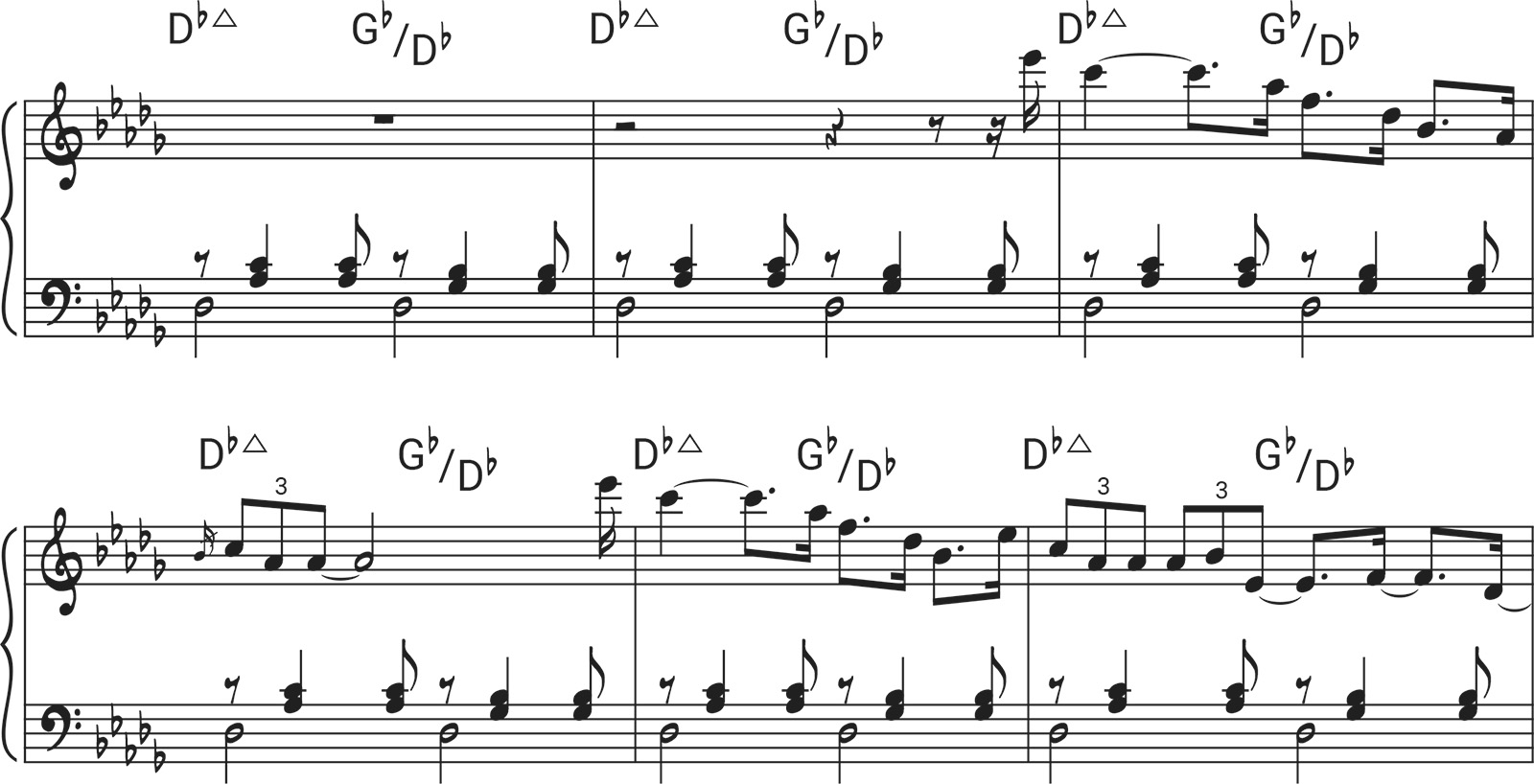Introduction to "The Christmas Song"
“The Christmas Song”, also known as “Chestnuts Roasting on an Open Fire”, is one of my favorite Christmas songs. It’s warm-sounding with a cozy holiday atmosphere and some great jazz harmonies! Originally composed in 1945 by Robert Wells and Mel Tormé, this song has been covered by numerous artists, most famously by Nat King Cole, whose version has a beautiful string arrangement by Nelson Riddle.
In this blog post, we will explore how you can transform this timeless Christmas tune using a so-called bass pedal.
This arrangement is part of my peaceful piano project Doeke. This month, I’m releasing a new Holiday song every day until Christmas Day. You can follow this Piano Advent Calendar here.
Step 1: Start with the Basic Version
The first step in reharmonizing any song is to familiarize yourself with the basic chord progression. Play through the original version to understand its structure and melody. I’ve used a combination of Nat King Cole’s version and Mel Tormé’s original to create a basic version with melody and chords:

Step 2: Find a Bass Note Pedal
In my piano arrangements, I love adding chord changes and complexity, but sometimes simplification is key. Using a bass pedal (i.e. keeping the lowest note the same while chords are changing) can be a powerful way to create unique arrangements. You can completely change the vibe of a song, making it moody, mysterious, or energetic — a sustained bass note has a lot of power.
Start by choosing a suitable bass note to act as your pedal. In most cases, the tonic (the first note of the scale) or the dominant (the fifth note) of the key works great. In this case, in the key of Db, your bass pedal could be Db (tonic) or Ab (dominant). But feel free to experiment with other bass notes to create even more tension and unique colors.
I went a Db pedal:

As you can tell, the effect is quite subtle, especially when using the tonic as your bass pedal. I like it though, because I don’t want it to distract too much from the melody and chords.
Step 3: Adjust the Chords
With your bass pedal selected, it’s time to adjust the chords of the song. Sometimes, just adding a bass pedal works already beautifully, but other times you might want to adjust some of your chords. Don’t be afraid to experiment with different chords to see what adds the best flavor to the song. At this point, you can also add a more specific pattern or rhythm in your left hand.
I’ve made the second chord a Gbmajor chord rather than an Ebm7 chord, and I’ve simplified some of the left-hand voicings. Instead of B7(#11), I used a F#minor chord (without the root), as it’s very similar to B7(#11). Both are instances of mixture (to learn about mixture and other standard reharmonization techniques, make sure to grab my free Reharmonization Quick Guide).

Step 4: Create Variations of the Melody
The final step in transforming “The Christmas Song” is to introduce variations to the melody. This doesn’t mean altering the original tune significantly, but rather adding nuanced changes or flourishes that make your version stand out. You can do this by playing around with the rhythm, adding grace notes, or even changing a few notes within the melody to better suit your new chord progressions.

Step 5: Create an Intro Using Chords from Your Arrangement
An intro sets the tone for your arrangement. Use the chords you’ve developed in your reharmonization to craft an intro that seamlessly leads into the song. This intro can be a simplified version of your chord changes or a more embellished one, depending on your style.
I’ve used the first two chord changes, Dbmaj7 and Gb as an intro, and then improvised a little melody over it. Someone recently pointed out that this was reminiscent of “Peace Piece” by Bill Evans, a beautiful example of a composition / improvisation based on a bass pedal.

Full Arrangement
Here’s the full arrangement of “The Christmas Song”. In this rendition, I’ve chosen to omit the bridge; I felt that focusing on the intro, verses, and outro alone would better convey the essence and mood I aimed to capture. Again, less can be more!
Conclusion
Reharmonizing “The Christmas Song” with a bass pedal highlights an important musical principle: simplicity can be just as impactful as complexity. Using a pedal note, rather than adding numerous chord changes, can effectively create tension, set a mood, or give your arrangement a distinct character.
I hope you enjoyed this tutorial. Let me know in the comments if you ever use a bass pedal, and if you know of any great examples.
If you’d like more tips like these, feel free to grab my free Reharmonization Quick Guide to learn the 5 essential steps of any reharmonization.

